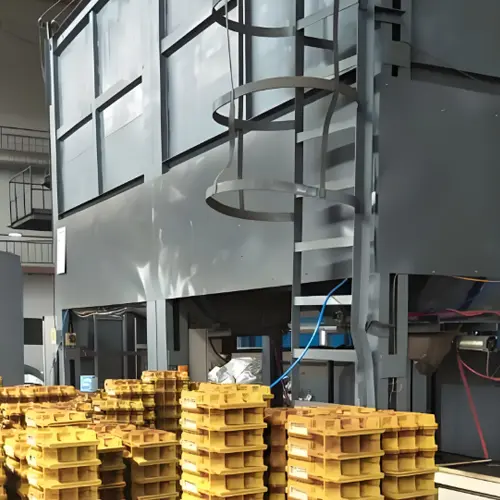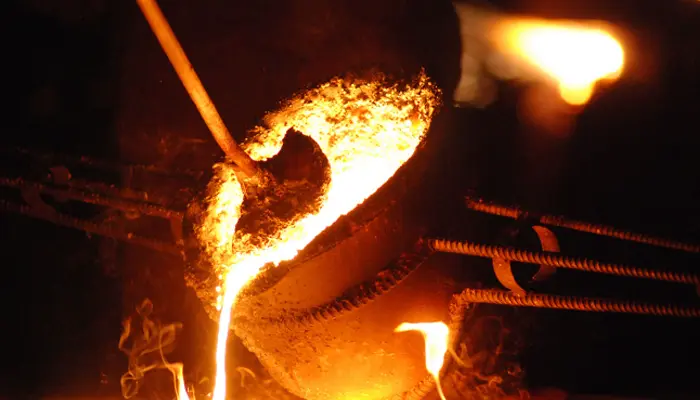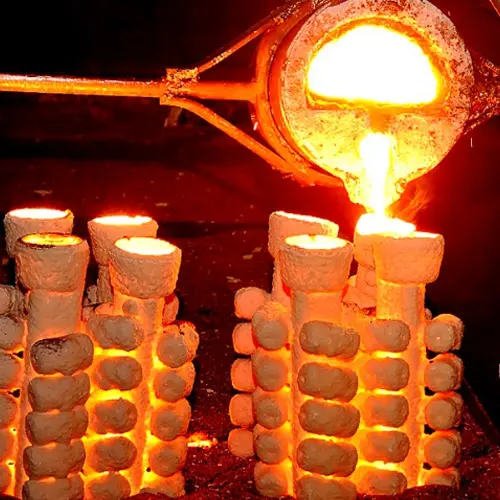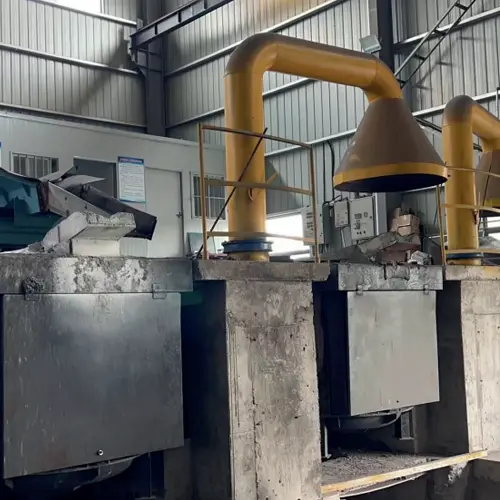The shell casting process mainly uses a heat-hardened molding sand (phenolic resin coated sand) to cover the metal template heated to a certain temperature, so that it hardens into a thin shell (the thickness of the thin shell is generally 6~12 mm), and then heats and solidifies the thin shell to achieve sufficient strength and rigidity. After that, the upper and lower shells are clamped with a clamp or glued with resin, and the casting mold can be formed without a sand box for pouring.
The process is roughly as follows:
1. Buckle the preheated (about 280-320℃) metal template on the tipping bucket filled with resin molding sand, and flip the tipping bucket to let the resin sand fall on the template. The resin melts when it is heated and bonds the sand to form a thin shell.
2. Reset the tipping bucket to let the unsintered resin sand fall.
3. Heat the template with the shell mold, and the thin shell can be peeled after hardening. Generally, the shell is formed twice. The first layer is the surface layer, which can make the casting smooth; the second layer is the reinforcement layer, which can enhance the strength of the shell. After each shell formation, it needs to be heated and hardened.
Usually a casting is made of two halves of the shell, clamped with a clamp or bonded with resin. The shell can be poured after assembly. Some castings, such as drill bits, can be made into a whole shell.
Shell casting process is an important casting method with a series of significant advantages, but also some disadvantages. The following is a detailed analysis of the advantages and disadvantages of shell casting process:
Advantages
High production efficiency: Shell casting process can significantly shorten the production cycle, and through the automatic machinery to make the mold, it reduces the dependence on manual operation, thereby improving production efficiency.
High casting quality: The castings obtained by shell casting have the characteristics of clear contours, high surface finish, and high dimensional accuracy. Because the shell of shell casting is thin and strong, it can accurately replicate the shape and size of the mold, so the dimensional accuracy and surface quality of the casting are usually high.
High material utilization rate: The shell of shell casting is thin and does not require a sand box, so the consumption of coating sand is small. This helps to reduce the waste of raw materials and improve the utilization rate of materials.
Environmentally friendly: Compared with ordinary sand casting, shell casting has less dust and noise at the production site, and less pollution to the environment. This meets the requirements of modern manufacturing industry for environmental protection and sustainable development.
Wide range of applications: Shell casting is particularly suitable for the production of various alloy castings with large batches, high dimensional accuracy, thin walls and complex shapes. Such as hydraulic parts, camshafts, crankshafts and corrosion-resistant pump parts, track shoes and other steel castings, as well as some castings such as automobiles, tractors, and hydraulic valve bodies.
Disadvantages
High cost: The phenolic resin coating sand used in shell casting is expensive, which increases the production cost. At the same time, the energy consumption in the molding and core making process is also high, which further increases the overall cost.
High technical requirements: The shell casting process has high requirements for mold structure, mold manufacturing accuracy and molding process parameters (such as sand shooting pressure and time, mold temperature, hardening time, etc.). This requires operators to have a high level of technical skills and experience to ensure the quality of castings.
Producing pungent odor: During the pouring process, phenolic resin mold sand may produce pungent odors, which have a certain impact on the health of operators and the environment. Therefore, appropriate measures need to be taken to reduce the emission of harmful gases.
In summary, the shell casting process plays an important role in the casting field with its unique characteristics and advantages. With the continuous advancement and innovation of technology, the shell casting process is expected to be more widely used and developed in the future.





